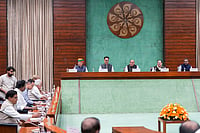
Hima Das Athlete
As a young girl in a small village in Assam, Hima Das once scribbled A-D-I-D-A-S on her low-cost running shoes that her father could only afford. Now she wears custom-made shoes with her name inscribed on them, made by the same German sports equipment company. The lanky sprinter—nicknamed the ‘Dhing Express’ after the small town near her village—is now among India’s top athletes, a rare sporting talent in a discipline few in India dare to pursue. Her gold medal winning run in the women’s 400-metre final at the World U-20 Championships 2018 in Finland put her on the path to instant stardom and is now part of India’s sporting folklore. At 21, she may not have many more years in the highly competitive sporting arena, but her achievement has made her a role-model for countless young girls across India.
ALSO READ: Our Dalit, Every Inch A Hero
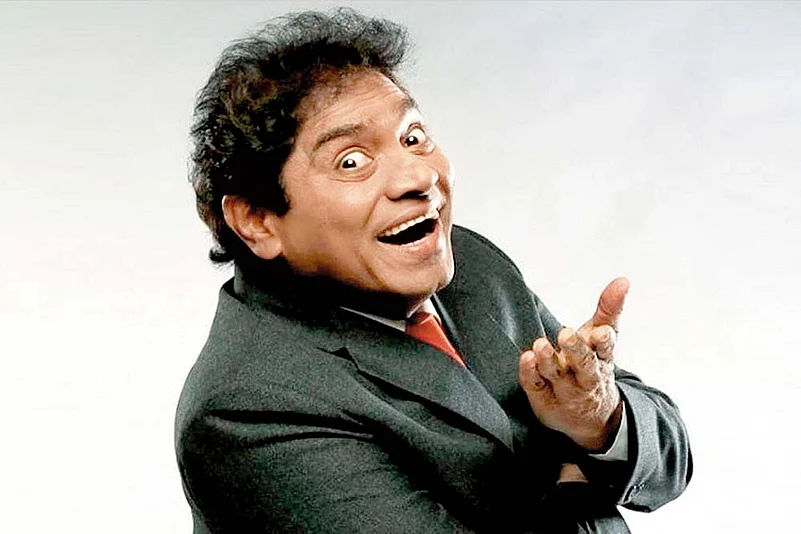
Johnny Lever Actor
Beneath the spontaneous wit, wisecracks and outrageously funny facial expressions of Bollywood’s highest-paid comic lies a tale of pain and hardship. Born John Prakasa Rao Janumala in a Mala Christian family from Andhra Pradesh, he dropped out of school and sold pens on the streets of Bombay to support his family, long before his perfect comic timing catapulted him to a position few Dalits had reached in the 108-year history of the Indian film industry. Away from his zany onscreen acts, the actor later turned a vocal preacher for Christianity after his son “miraculously recovered from cancer”. It left right-wing fundamentalists fuming, who promptly accused him of promoting ‘religious conversion’.
ALSO READ: Dalit Time

Chandra Bhan Prasad Sociologist
A self-trained anthropologist and social psychologist, as he likes to describe himself, Prasad once took up arms in the early 1980s, when he joined the CPI(ML) with a dream to change India’s caste-ridden society. Today, he is widely regarded as a leading Dalit thinker and commentator who fights for the rights and empowerment of India’s most marginalised—castes regarded as ‘untouchables’. His columns and articles are translated into many Indian languages and his books are used across the world to understand the complexities of the caste system in Indian society, where nothing, he says, belongs to Dalits. His unending fight is to change that.
ALSO READ: The Soul-Sapping Climb From Below

Sikander Kumar Academic
The list of deprivations seem pre-modern: with no money to afford a rented room in Shimla, the poor student spent his nights in a desolate corner of the panchayat bhawan; he skipped breakfast and survived on tea and bread for two years when studying for his Master’s degree in Economics; with the money from his father—a havaldar in the army—he could hardly meet monthly expenses for study; he made it with a single pair of shoes and trousers and a shirt. Still earlier, his Himachal village of Dagoh had no roads, electricity, running water and the journey to school was a 7 km-long hike over hill tracks. Then, as a Dalit, there were the invidious social obstacles and caste discriminations—a thirsty drink from an ‘upper caste’ pond once invited a brutal beating. Yet all this only strengthened the resolve of Dr Sikander Kumar. His rise to the post of vice-chancellor of Himachal Pradesh University—after a brilliant academic, teaching and administrative career—is truly inspirational because he had the grit and the resource to face everything life, and society, threw at him. “Being born in a socially deprived Dalit family at a remote mountain village and reaching Shimla for higher studies, I thank God and pay tribute to my parents,” says Kumar.

Jyoti Kumari Student
Riding a battered bicycle, with her injured father riding pillion, in the scorching May heat, a 15-year-old girl covered 1,200 kms—all the way from Gurgaon to her native Darbhanga in Bihar, in just eight days during the lockdown last year. Her exemplary courage earned her the moniker of the “lion-hearted girl” from The New York Times and the Pradhan Mantri Bal Puraskar from Prime Minister Narendra Modi. The Cycle Federation of India wants to groom her for the national duty in the sport and film-makers are fighting for the rights of her biopic. Jyoti just wants to get a good education.

Mari Selvaraj Film-maker
In the movie Karnan, a major critical and commercial success, director Mari Selvaraj (37) has actor Dhanush deliver these lines to a police SP whose force has rampaged through his village. “You do not care about our real problems. Instead, you are bothered by our names (like Karnan, Duryodhanan and Abhimanyu) because you cannot tolerate us standing up and answering back to you.” Richly symbolic, Karnan is Selvaraj’s second challenge to caste discrimination after his watershed first film, Pariyerum Perumal (2018). In that Selvaraj has his Dalit hero confront two issues—college education and an upper caste girl falling in love with him. After suffering humiliation, the protagonist has everything resolved to his satsfaction, as they must on screen. Selvaraj explains that rather than ending with a confrontation, he chose to show how talking can solve differences. With just two films, Selvaraj has emerged as a conscience-keeper of Tamil cinema, raising questions about inequality with brilliant storytelling.
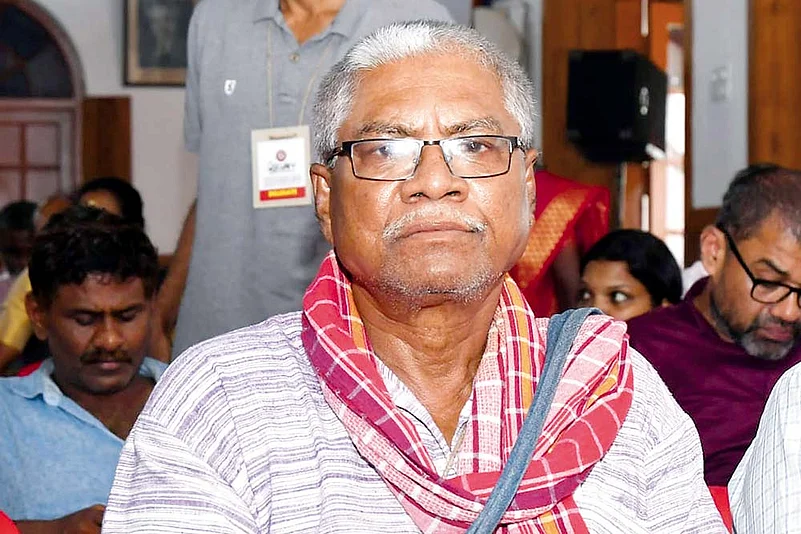
Manoranjan Byapari Writer
Bengal was one of the first places in Asia to have adopted a progressive modernism—a liberal melding of European ideals and sensibilities with Indian ethos. In time, politically radical ideas found a fertile breeding ground here too. Yet, among its hundreds of writers, poets and creative minds both past and present, rarely does one find a name that is not savarna. Manoranjan Byapari shattered that well-cast mould, tearing apart walls of caste, class and refugeehood with his autobiography Itibritte Chandal Jibon (2016). A Namashudra refugee from erstwhile East Pakistan, the unlettered vagabond joined the Naxalite movement, went to jail, worked as a cook, a richshawpuller and a labourer upon his release, till a chance meeting with author Mahashweta Devi introduced him to the world of letters. His books won awards, and he was invited to prestigious lit-fests, but Byapari continues to lead a frugal lifestyle. He was nominated by the TMC to fight the assembly polls from Balagarh.

Gaddar Balladeer
A throaty, full voice, an endearing and humble personality, and a life of struggle—that’s how villagers across pre-bifurcation Andhra Pradesh remember Gummadi Vittal Rao, popularly known as Gaddar (after the pre-Independence Gadar Party). The engineering student who discovered his talent for writing lyrics hewn to Marxist-Leninist ideology, putting them to music and singing them, soon went underground, where he became the ‘People’s Poet’ for the Maoist rebellion that spread from the plains of Warangal across the adivasi belt of central India. Shot at, incarcerated, tortured—for 40 years he lived a fugitive life, helming the cultural wing of the then CPI-ML(People’s War). In 2010, he decided to enter electoral politics from an Ambedkarite platform. But such was his popularity among his former comrades that no one questioned his ‘betrayal’ of their cause.

Neeraj Ghaywan Film-maker
There is a new breed of Dalit achievers on the horizon. They unashamedly assert their identity and underprivileged backgrounds, speak of the myriad and insidious ways discrimination works, while competing with their privileged caste peers on the oldest bogey against the underprivileged—merit. Neeraj Ghaywan brings back the FIPRESCI award from Cannes, directs commercials for British Airways and shuts up right-wing posterboy Vivek Agnihotri on Twitter without breaking sweat. Today, as he flies business class, he dreams of enabling an inclusive, rainbow diversity in Bollywood, where Khatris and Pathans are perceived as the ruling mandarins.
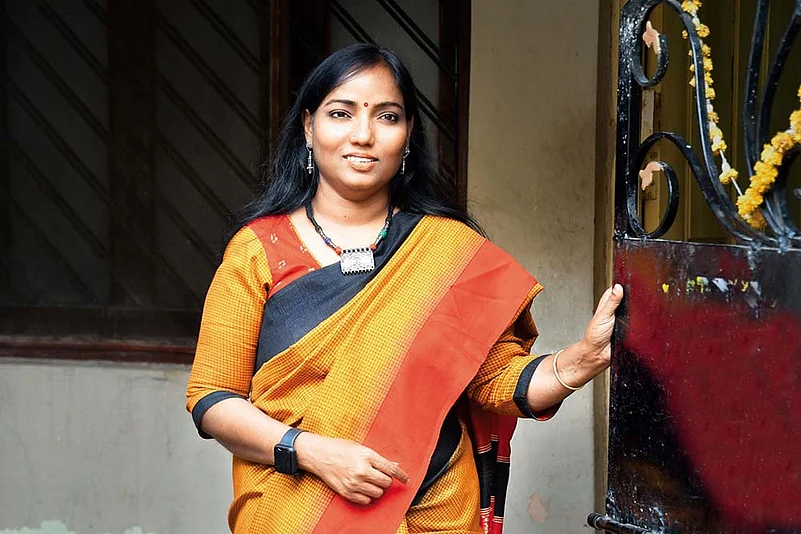
Sujatha Surepally Academic, Activist
Rarely do serious academics enter the election ring of Indian politics. Rarer still do they address issues of caste and gender. That’s where Sujatha Surepally, who teaches sociology at Satvahana University in Karimnagar, found herself when she plunged headlong into electoral politics as a Vidhan Sabha candidate for the BSP, from Chennur in Telangana. The information she filed with her nomination papers holds a clue to why she chose to fight the election. She has three police cases against her, all involving her participation in protests—against displacement by the Polavaram irrigation protest and the demand for Telangana state, etc—that intersected with Dalit and gender issues. She lost the election, but got pitch-forked into a larger canvas of activism.

Arivu Rapper
If a non-film Tamil song has ever taken the internet by storm, it has to be Enjoy Enjaami by singer Dhee and rapper Arivu (Arivarasu Kalainesan), who also wrote the lyrics. Arivu’s lyrics pack an earthy punch: “The lakes and ponds belong to the fox, dogs and cats too”, he intones, in words that speak of egalitarianism. “The song is a tribute to my grandmother Valliamma, who was repatriated from Ceylon under the Srimavo-Shastri Pact, only to be seen as an outsider and discriminated against as a Dalit,” says Arivu. “My songs are meant to disturb.” Anthropology professor Abdul Kalam says the pain of this transplanted community has not been recorded adequately. “Not many know Dalits comprise 83 per cent of the plantation Tamils in Sri Lanka. The emphasis on the plight of the Jaffna Tamils neglects their suffering,” Kalam adds. According to C. Lakshmanan of MIDS, singers like Arivu and film-makers like Pa. Ranjith and Mari Selvaraj “combine their talent with a deeper understanding of society, viewing it through an Ambedkarite lens.”

Vinod Kambli Former Cricketer
Unlike the great Dalit twirlyman Palwankar Baloo, Vinod Kambli never wore his caste on his sleeve, nor did he become a Dalit activist after retiring from cricket. His rise from the slums of Mumbai had perhaps taught him that to survive and shine in cricket, he not only would have to fight bone-chilling penury, but also the glass barrier of caste in what was one of India’s most exclusive clubs—BCCI’s Team India. For a brief while, he adorned the blue jersey with swashbuckling batsmanship, till a slight fall in form pushed him out of the team, forever, even as lesser players continued to enjoy a long rope. In the end, he will remain an enigma; frozen in our memory is his tearful face during the walk towards the pavilion at the Eden Gardens as India collapsed out of the 1996 cricket World Cup semi-final against Sri Lanka.
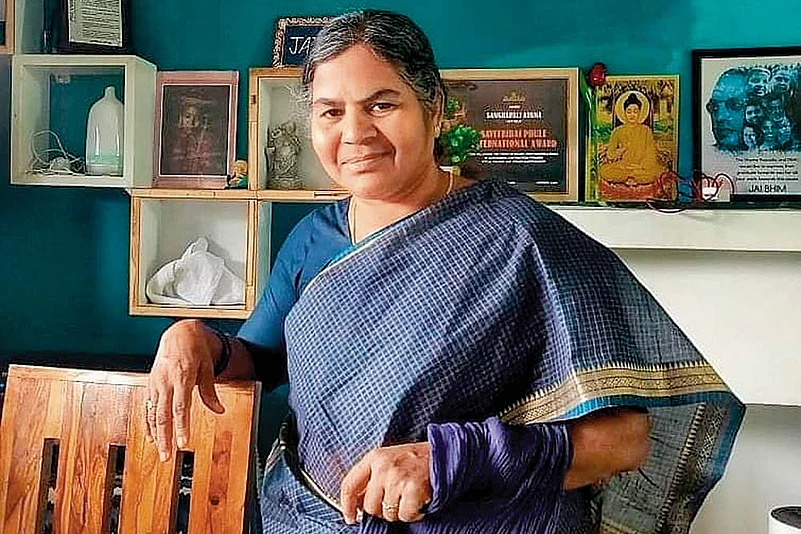
Radhika Vemula Activist
She was meant to be a bereaved mother who would disappear as the news of the death of her scholar son, Rohith Vemula, receded into the haze of social-media-addled memory. Instead, Radhika Vemula’s transformation into Mother Courage for thousands of protesters of almost every progressive cause since 2016—students, minorities, marginalised and oppressed communities, farmers, civil rights activists—is the stuff of legend. The Justice For Rohith Vemula campaign—in memory of the budding Dalit thought leader and student of Hyderabad Central University who committed suicide—continues to chug on, foregrounding the myriad ways discrimination continues to hound scholars from marginalised communities. Radhika is often seen at protests with Fatima Nafees, mother of another scholar, Najib Ahmed, who disappeared mysteriously from Delhi’s Jawaharlal Nehru University soon after Rohith’s death.

Anand Teltumbde Scholar, Activist
Many people know that Anand Teltumbde is married to Babasaheb Ambedkar’s granddaughter. Fewer know he is conventionally highly qualified—a mechanical engineer with an MBA from IIM-A, with a spectacular corporate career he gave up midway to pursue an equally spectacular career as an academic. But what really marks him out among activists in India is how he reads Ambedkar through Marxist lenses. Accused of plotting to assassinate the PM as part of an alleged conspiracy surrounding the 2018 Elgar Parishad event at Bhima-Koregaon, he has been incarcerated under the Unlawful Activities (Prevention) Act since April 2020.

Raja Nayak Entrepreneuer
Cliches won’t fully capture Raja Nayak’s career graph in the world of business. He started out selling ‘foreign reject’ shirts on the footpath outside a factory in Bangalore while still a teenager in the late 1970s, and went on to become a wholesale agent for a shoe manufacturer. Those early ventures eventually folded up—but by then, it was the mid-1990s and the era of economic liberalisation. Nayak started a unit to produce cardboard cartons for computer products and then chanced upon an opening into the logistics business where he found his feet. Other successful business ventures have followed since. Over the past decade, Nayak’s gaze has turned—via the Dalit Indian Chamber of Commerce and Industry—to young entrepreneurs, helping them “fight caste with capital”.
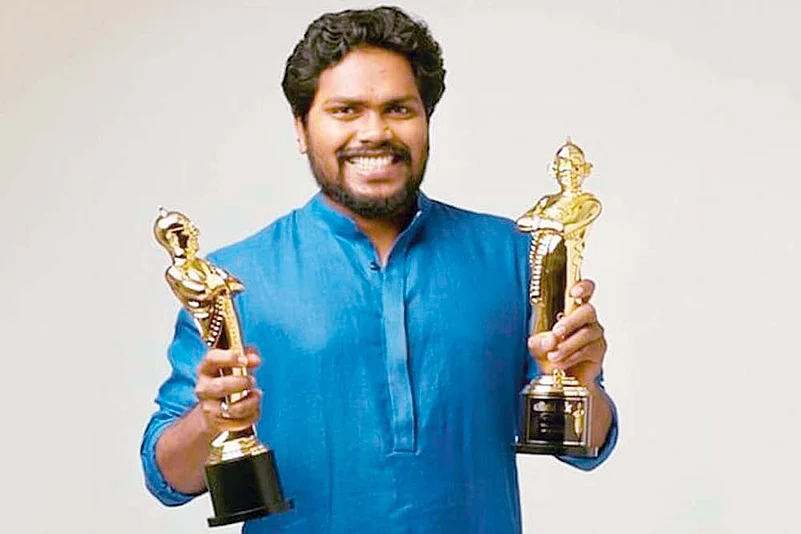
PA. Ranjith Film-maker
He goes fearlessly where Bollywood fears to tread. In fact, Bollywood is almost blissfully ignorant of the territory Pa. Ranjith calls home. Where Indian cinema has uniformly adorned office walls with portraits of icons like Gandhi and Bose as mise-en-scène, he inserted a photo of Ambedkar into the notes on the first page of his first script. Ranjith had to quickly climb down then, but his career saw a meteoric rise, from one blockbuster to the next, pitting Dalit consciousness front and centre. He came to represent realism through his first two films, Attakatthi (Cardboard Sword) and Madras, which had Rajinikanth give him dates for his next two films—Kabali and Kaala, which spoke about the working class, first in Malaysia and then in Mumbai’s Dharavi. Then Ranjith turned producer and launched Neelam Productions. In December 2018, when Chennai had its annual festival of Carnatic concerts and Bharatanatyam recitals, his Neelam Cultural Centre spearheaded a three-day Vaanam Arts Festival where subaltern art forms got showcased. Ranjith, who supports ‘The Casteless Collective’ indie band and is also a publisher of books, has opened avenues for Dalits in cinema, writing, music and other art forms. “Culturally there should be more discussion. Only then new voices, especially talented Dalit voices, would be heard by society,” he says.
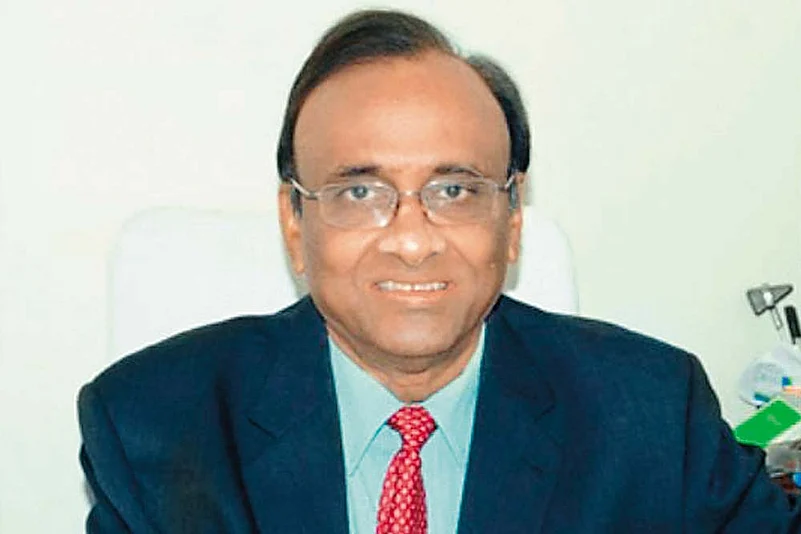
Dr Dasari Prasad Rao Cardiothoracic Surgeon
In the mid-1980s, Dr Dasari Prasad Rao conducted the first coronary bypass surgery in Andhra Pradesh. It was not a very common procedure in India then, but things were at the cusp of change and, as Rao recalls, he was among a crop of young surgeons who had returned to India after training abroad. “We were lucky to be part of that developing phase,” the 71-year-old Padmashri awardee recounts. “‘Advanced medicine at affordable cost’ was our motto.” The challenge even today is to tailor the costs of advanced medical care to what the patient can afford. Rao believes the various efforts on this front in different parts of India will pay off eventually. “One day every Indian citizen will be able to get advanced treatment in any branch of medicine,” he says.

P. Sivakami Activist, Writer, Politician
She cherishes the last 12 years more than the 28 years she served as an administrator. “There is far more freedom as a social activist and writer,” she says. An MLA’s daughter, Sivakami (63) first faced discrimination as a Dalit woman when she became an IAS officer. “If I asked money for the tourism department, it was fine. But, as director of Adi Dravidar and Tribal Welfare, I was dubbed ‘communal’ as I was asking money for Dalits,” recalls Sivakami, who has published novels, poetry, stories and essays. After voluntary retirement in 2008, Sivakami became one of Tamil Nadu’s most outspoken Dalit activists. After an unmemorable stint in politics with the BSP, she founded Samuga Samthuva Padai (Social Equality Army) and contested as part of the DMK alliance in the 2016 assembly elections but lost.

Nagraj Manjule Film-maker
Spivak got it wrong. Not only can the subaltern speak, when they do, they enrich our collective knowledge with insights from lived experience that no amount of empathy can substitute. Nagraj Manjule’s films do not deploy startling narrative strategies, nor do they break free of mainstream aesthetics. Yet, they leave the audience unnerved, by the sheer audacity of the stories that are considered commercially unviable. Like Sairat, which went on to become the highest grossing Marathi film of all time, and has been remade in five different languages since its release in 2016. Now firmly ensconced in Bollywood, one waits to see what the fanboy does with Amitabh Bachchan when Jhund releases in June.

Sudheer Rajbhar, Founder, Chamar Studio
The founder of Chamar Studio wears his caste identity like a badge of honour. He is a Chamar and that’s the name he chose for his company in Mumbai, the city where he grew up. The 34-year-old’s firm produces felt wallets, belts and bags, and all his employees are Dalit cobblers, leather workers and street sweepers. Rajbhar says Chamar came naturally to him while choosing his firm’s name—an endeavour to give his people an identity beyond that of a community at the lowest rung of the Hindu caste hierarchy. His products are sold at trendy stores in India and the high streets of Europe.

Vinay Bambole, Jt. Gen. Manager, Air India
Bambole credits his father for encouraging him to pursue his not-so-ordinary dream to fly. With government scholarships, relentless efforts and ample encouragement Bambole successfully pursued his dream. Now with Air India for over 30 years, Bambole looks back with gratitude for his family and is determined to give back to society. After being in the field for several years, he realised that youth from Dalit communities could do with guidance and training when they apply or even aspire to apply for jobs. With a singular desire to help the youth, Bambole formed Ambedkarite Aviators Groups and started training workshops on a voluntary basis. “We have conducted four such seminars on the importance of higher education and studies abroad. We know how difficult the struggles are and I feel the need to give something back to people.”

Ashok Das Founding Editor, Dalit Dastak
“You’ll never understand how deep the wounds from centuries of oppression run unless you have been scarred yourself,” says Ashok Das. He recalls the casteist slurs his mother Sunaina Devi had to hear, or how his late father, Ashrafi Das, a law clerk in a court in Bihar’s Gopalganj, would be offered tea in a broken cup by their Brahmin landlord—Ashrafi’s junior in the same court. An alumnus of the Indian Institute of Mass Communication, Delhi, Das worked as a journalist, but saw a “superficiality in the mainstream media’s outrage over incidents of caste violence and discrimination”. In June 2012, with JNU professor Vivek Kumar and others from the Ambedkarite movement as his mentors, Das launched Dalit Dastak, a monthly magazine dedicated to such issues. With a print run of 15,000 copies, it hasn’t missed an edition since. Das now has a YouTube channel with over eight lakh subscribers, a news app and a publication house. “If we want our stories to be heard, then we have to tell them ourselves,” he says.

Lahori Ram Bali Journalist, Activist
There are few people alive today who can claim to have met Dr B.R. Ambedkar, fewer still who were actually present at Babasaheb’s side, on September 30, 1956, when he disbanded the Scheduled Castes Federation and announced the decision to form the Republican Party of India. Jalandhar-based nonagenarian Lahori Ram Bali is among that fast-vanishing breed of the ‘original Ambedkarites’. Bali recalls how he waited for three hours at Ambedkar’s Delhi residence after the September 30 meeting to get a private audience. “I made one promise to him—that I will live by his ideals until my death and propagate his message. For the past 64 years, I have kept my word.” In 1958, Bali launched Bheem Patrika to spread Ambedkar’s message. It was published in Urdu until 1965, when Bali turned it into a Hindi publication to amplify its reach. The longest-running magazine dedicated to Ambekarite thought, it is still published from Jalandhar with a print run of over 3,000 copies.

Dr Sushrut Jadhav, Cultural Psychiatrist
A street psychiatrist and clinician anthropologist in London, UK, Dr Jadhav works as Professor of Cultural Psychiatry, University College London; Consultant Psychiatrist, Camden Homeless-ed Outreach Services & Islington Mental Health Rehabilitation Services & Lead Clinician, Cultural Consultation Service, Camden and Islington NHS Trust, London, UK. He is Founding Editor & Editor-in-Chief, Anthropology and Medicine journal (Taylor & Francis, UK). Dr Jadhav’s current interests include mental health dimensions of marginalised groups with a focus on South Asia, based on which he has pioneered a political psychological therapeutic intervention for caste identity distress. More recently, he offers 'threadbare' therapy for those who seek to redeem themselves from the guilt of social psychological privilege and reflect upon their sickness -- inflated self-esteem gained from humiliating others and denying them dignity. In the photo above, Dr Jadhav is singing songs of liberation with former manual scavengers in UP.

Sukhadeo Thorat Academic
Economist, UGC chairman, professor emeritus of JNU—Sukhadeo Thorat has donned many hats. But, perhaps, the most lives he has touched is through his interventions on discrimination while guiding government policy and academic research, where he has had to struggle for decades against peers and seniors who attempted to stonewall his lifelong interest in linkages between caste exclusion and economic discrimination, using rigorous empirical evidence. When he finally could, he dedicated his work to developing and fine-tuning measures of untouchability and discrimination that influenced state policy on affirmative action in the post-liberalisation period.

Aswathi Rajappan Queer-Dalit Activist
In 2019, a 25-year-old became India’s first openly intersex candidate contesting for the Lok Sabha. Aswathi Rajappan, called Chinju by friends, took on a sitting MLA, a Union minister and a former Rajya Sabha MP as an independent in the fight for the Ernakulam seat in Kerala. She lost, but winning or losing was never the point—entering the fray as a representative of the queer community was a victory in itself, and a historic moment for queer-Dalit visibility in particular. Active with Sahayathrika, a Thrissur-based organisation where s/he was introduced to the word ‘intersex’ for the first time, Chinju advocates for an intersectional understanding of marginalities.

Bharathi Prabhu Activist-Educationist
For millennia, they have been relegated to the malodorous margins and left there to exist without the light of education. And when the most determined of Dalits ventured to educate themselves, they faced hostile scorn. “Nobody wants to hear a positive Dalit story. You need violence to bring a Dalit to limelight,” the activist has said. In his mission to change that, he founded the Thudi movement—that celebrates educational success through a Dalit graduation ceremony—in 2009. He was inspired by the US Black American graduation ceremonies. Founder of the Radical Students Movement, Prabhu is a dramatist, poet and a leading expert in Tamil Buddhist culture.

Satpal Muman Activist
He is the secretary of Ambedkar International Mission in London and founder of Caste Watch UK. Muman has been at the forefront of anti-caste movement and fighting for equality legislation for over two decades, organising protest marches in London against the lynching of minorities and Dalits in India in 2017. In a talk titled ‘Fighting Caste Discrimination in the UK’ last year, Muman said: “Colonisation is generally understood in terms of geography, a process of establishing control over indigenous people.… However, there is another aspect: the colonisation of the mind in the realm of culture, race, religion, politics, philosophy.” This colonisation is what Muman is aiming to unshackle.

Kadubai Kharat Folk Singer
A folk singer who used to earn her livelihood by singing Ambedkarite songs and asking for alms, Kadubai is not just a successful performer, but also an internet sensation. In just a couple of years since her songs went viral, she has traversed the journey of singing with her ektara and asking for alms to being a performer in demand. A single mother, she had to start singing to feed her family of three children. Her belief in Dr Babasaheb Ambedkar and his teachings is the only driving force and calling of her life. “I never thought I would get this much success and recognition. It is because of people who noticed and helped me to establish myself. We are all motivated by what Babasaheb taught, and spreading his values and thoughts is all I want to do,” she says, speaking over phone.

Disha Pinky Shaikh Transgender Activist
From facing rejection early in life, Disha Pinky Shaikh has had a phenomenal journey as a transgender activist, writer, speaker and now a state spokesperson for the Vanchit Bahujan Aghadi led by Prakash Ambedkar. She deeply believes in Babasaheb Ambedkar’s teachings since being introduced to his work by her guru. A few years ago, she was in the news as the first transgender to set up a stall to sell books at Shivaji Park in Dadar during the commemoration of Ambedkar’s death anniversary on December 6 for which thousands of Dalits come to Mumbai. Her writings in Marathi publications and her speeches have inspired many, and her social media presence is remarkable too. As an alliance of minorities and the marginalised, the Vanchit Bahujan Aghadi is perhaps an appropriate platform for Disha, who wishes to not just give voice to her community, but also to speak for justice for all.

Sumit Chauhan Mediaperson
In a space still marked by ubiquitous caste domination, he is a rare voice for voiceless Dalits in Indian media. An Ambedkarite journalist and caste activist, he is the founding editor of The Shudra (rechristened as NewsBeak), a platform that articulates the views and addresses the concerns of the 16 per cent of Indians flung aside for millennia on the lowest rung of the caste ladder. After working with leading media organsiations for about a decade, he set out to establish the National Bahujan Media to let the oppressed classes speak through his journalism of conscience. And this with the people’s support, sans corporate backing.
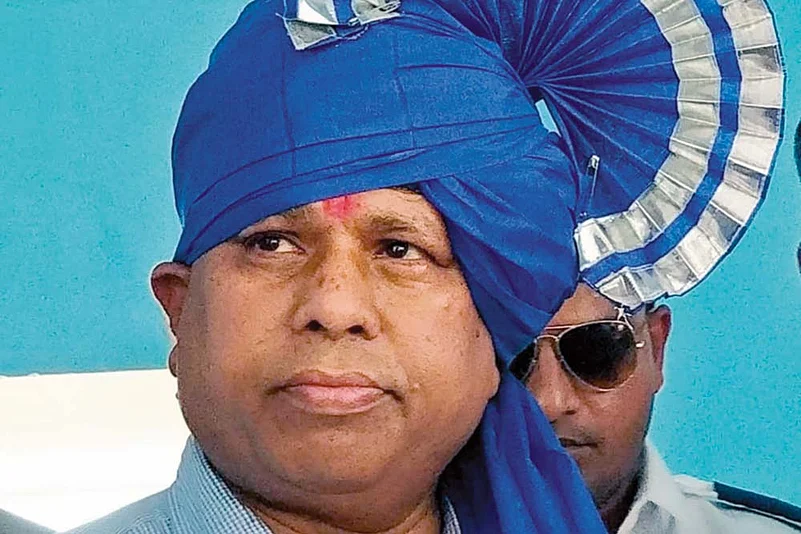
Waman Meshram President, BAMCEF
Sometime in 1976, students at the Dr Ambedkar Law College in Maharashtra’s Aurangabad were told that a prominent Dalit leader wanted to address them. Among the students was 19-year-old Waman Meshram. Meshram wasn’t interested in the “neta ka bhashan”; he had seen politicians coming to deliver long speeches and then disappear till the next election season. The politician was the late Dalit icon, Kanshi Ram. “Kanshi Ram ji came into the classroom, took a chalk and began writing on the blackboard why we must fight against the oppression of Dalits. I had never seen any neta with such clarity of purpose.… I joined BAMCEF (Ram’s organisation) in 1978,” Meshram tells Outlook. Meshram eventually rose to become BAMCEF’s national president in 2000. “For 21 years now, I have been heading BAMCEF but our motto remains what Kanshi Ram always said – we challenge the Brahminical social order and fascist propaganda, help all victims of the social system – not just the Dalits but also those from backward communities and religious minorities,” he says.

Manohar Mouli Biswas Editor, Dalit Mirror
By virtue of being editor of the pioneering literary magazine Dalit Mirror for over a decade, Manohar Mouli Biswas has been bridging many worlds. He brings together Dalit writers with those from other castes, while introducing new Dalit writing in Bengali to English-language readers. He is also an early conduit for radical Marathi Dalit writing among Bengali audiences, having inculcated his Dalit consciousness from his time in Nagpur in the late 1960s. In essence, his early life of poverty and displacement—including migrating from Khulna in East Pakistan during Partition and poignantly described in his autobiography—encapsulates overriding themes of Dalit existence in India.

Dr R.S. Praveen Kumar IPS officer
Malavath Purna, a 13-year-old adivasi girl from Nizamabad in Telangana, and S. Anand Kumar created history by climbing the Mount Everest in 2014. The inspiration behind their stupendous achievement is the indomitable IPS officer, Dr R.S. Praveen Kumar. Born near the remote Nalamalla forest in Telangana to teacher parents, Kumar is a veterinary doctor by education. He joined the IPS in 1995 and founded the students movement called Swaeroes, which is aimed at skilling children with not only academics, but making them excel in arts and sports as well.

Rahul Anvikar Folk Singer
When it comes to resistance and protests, music has always played a special role in creating awareness and bringing different people together for a cause. Rahul Anvikar has been effectively employing his musical talents to spread the message of Babasaheb Ambedkar’s teachings and motivating his followers. His YouTube videos are an indication of his popularity as a singer and how the audience is charged up. He doesn’t shy away from raising various issues on social media outlets—be it farmers’ protests or the plight of folk singers in the pandemic or even busting myths around Covid. His preferred language is Hindi—be it in songs or posts.

Bama Faustina Soosairaj Writer
She wrote the first Dalit autobiography in Tamil. “We must crush all these institutions that use caste to bully us into submission, and demonstrate that among human beings there are none who are high or low.” Powerful thoughts like this one run through the pages of Karukku, Bama’s autobiographical novel—a brutally honest take on the discrimination faced by Dalits, especially women. Bama, as she is popularly known, wears many hats—that of a nun, a Dalit feminist, a teacher and a novelist. She has written novels and short stories on caste and gender discrimination in our society.
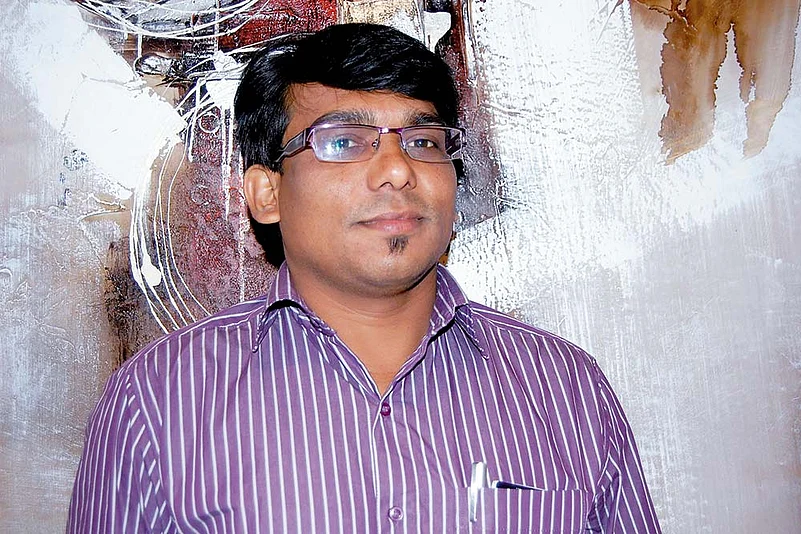
Aman Kamble Mediaperson
Aman Kamble is a known name in Nagpur, Vidarbha, where he hails from—the city that is home to the RSS headquarters and where Babasaheb Ambedkar embraced Buddhism. He runs Awaz India Channel and Lord Buddha TV channel, which are on the cable network. From running a music competition on April 14 for raising awareness about Ambedkar’s teachings to constantly covering issues that affect the Dalit community, Kamble also takes a stand on possible malpractices during elections and farmers’ protests and so on. The Hindi couplets peppered all over his social media accounts are often about the rights of the marginalised.
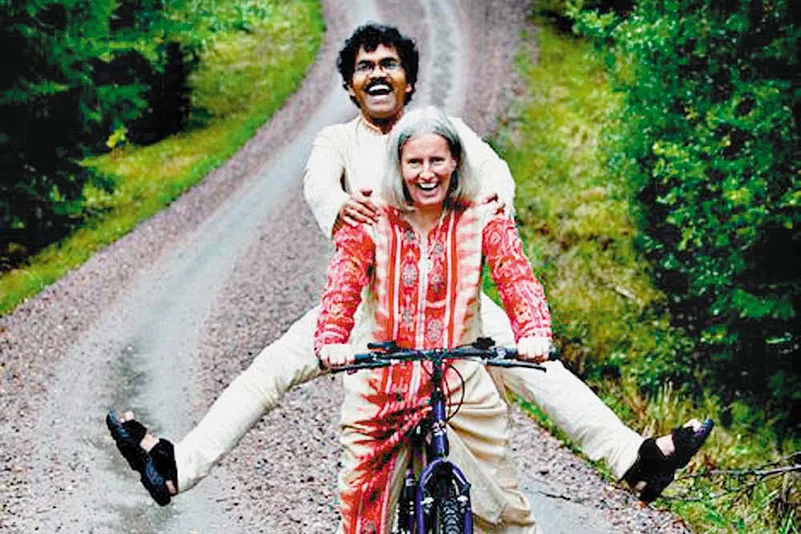
Pradyumna Kumar Mahanandia Artist
An artist sits below a fountain in Delhi’s Connaught Place—draws and draws portraits, and draws his future wife all the way from Sweden in a van, 22 days across continents. He reciprocates, riding a bicycle from Delhi to her home in Gothenburg in 1977. This is likely Sanjay Leela Bhansali’s next movie—the love story of Pradyumna Kumar Mahanandia and Charlotte von Schedvin. Mahanandia, 72, is a Dalit artist born in Odisha, who studied art in Visva Bharati and the College of Art, Delhi. He lives with wife Charlotte in Sweden and has made quite a name for himself—as an artist whose paintings are exhibited across the world and on UNICEF greeting cards.

Ginni Mahi Singer
Her voice is full-lunged, with a touch of Sufi, the songs are addictively hummable, and the music videos are peppy, like any Punjabi rap/hip hop album. But it’s the message that resonates more forcefully: “Kurbani deno darrde nahin, rehnde hai tayyar, haige asle to wadd Danger Chamar (the one who is not scared to sacrifice, the one who is the real thing is Chamar).” Danger Chamar—the 20-something Jalandhar-based singer Ginni Mahi’s song that catapulted her to the “Dalit voice” league. Ginni Mahi aka Gurkanwal Bharti amplifies voices that often go unheard; and spotlights her community’s problems—the harassment, discrimination and violence Dalits face every day.
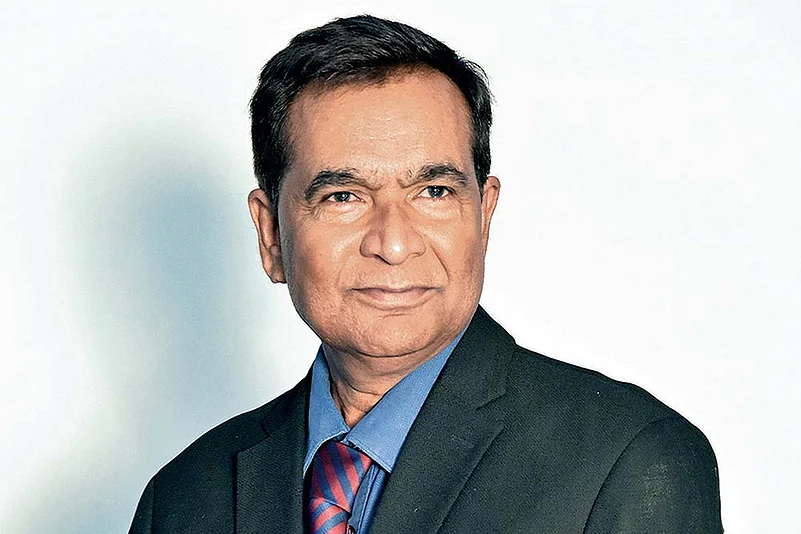
Martin Macwan Founder, Navsarjan Trust
Like the lotus blooming in mud, heroes spring from abominable situations. Ask the landless Dalits in Gujarat and they would point to their hero-flower: Martin Macwan, 62, founder of Navsarjan Trust, a cooperative that works for Dalit rights in more than 3,000 villages. The activist, one of 11 siblings, began by encouraging Dalit tenant farmers to stand up for their rights. Goons of a landlord killed four of his colleagues in 1986, which is now known as the Golana massacre. He escaped death and steeled his resolve to combat the atrocities Dalits suffer. Today, he is promoting Dalit artists—the godana or tattoo style of Mithila paintings in Bihar.

Asha Kowtal Activist
“Historical oppression most craftily denies access to resources, opportunity and power,” says Asha Kowtal, who believes a decade and more of community work to combat caste-based gender violence has taught her important life lessons. A former general secretary of the All India Dalit Manila Adhikar Manch, Kowtal’s aim has been to bring the voices of Dalit women to the centre of the political discourse via initiatives such as a national tribunal on justice for Dalit women, Dalit women’s conferences and self-respect yatras. Her current focus is on building special protection schemes for human rights defenders and sustainable ways of working for women leaders of social justice movements.

Bhanwar Meghwanshi Activist
In 1992, when Bhanwar Meghwanshi—then an 18-year-old from a village in Rajasthan’s Bhilwara who had spent the previous five years attending shakhas—quit the RSS, no one took note. In 2019, his book, Main Ek Karsevak Tha and its English translation, I Could Not Be a Hindu: The Story of a Dalit in the RSS, caught popular imagination. Ever since, he has been a prominent Dalit voice campaigning against the RSS vision of a Hindu Rashtra “in which the Brahmin will rule, the Dalit will serve and those of other religions will be persecuted”. It took him “10 years to unlearn what the pracharaks taught and another 10 to understand my own community, my country, Babasaheb Ambedkar’s teachings and our Constitution”. His mission now is to “help other Dalits find their voice and to rescue those who have been fooled into thinking that becoming RSS-approved Hindus is for Bharat’s greater good”.

Rahul Pradhan Politician
Rahul Pradhan (35) is a young politician eager to make a difference. Carrying forward the legacy of his father S.M. Pradhan, who had co-founded Bhartiya Dalit Pather, Rahul is president of Yuva Panthers and has just become part of Chandrashekhar Azad’s Azad Samaj Party. He speaks of his mother’s struggles to run the household and his father’s struggles to keep the movement going as factors that have driven him to activism and politics. “Young politicians like me have the reach, capability and talent to do something and make a change, but they are often just used and not given their due. We need to change that,” he tells Outlook, adding that working with Chandrashekhar Azad’s party will give him that opportunity. “The struggles are going to get harder for the poor and the marginalised with everything that is happening in our country and we are prepared to fight—be it on the streets or in Parliament.”
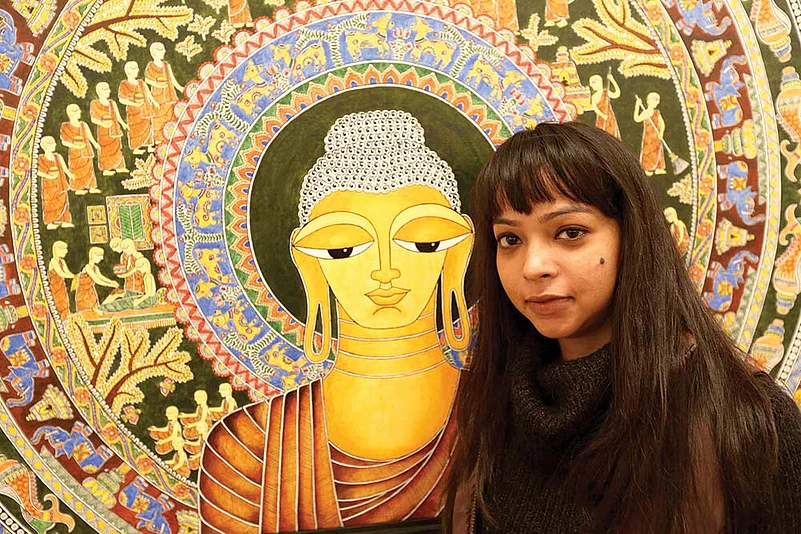
Malvika Raj Artist
She was once admonished for her ‘audacity’ for expressing a desire to learn the Tantric style of Madhubani painting simply because she happened to be a Dalit in a state where only Brahmins were supposed to have such privileges. “Caste is so deeply entrenched in everyone’s minds that even a local Dalit artist asked me not to paint in the Tantric style because he feared for my life,” says the Bihar-based artist. Today, her cerebral interpretation of the traditional art form, depicting Hindu and Buddhist narratives, is celebrated globally. Her painting of Babasaheb Ambedkar in the Madhubani style, which hangs at the University of Edinburgh, just shows the distance she has travelled.

Ilaiyaraaja Composer
He changed Tamil cinema music in a fundamental way—at times minimalist with just the melody of a lone flute and at others a thunderous crescendo of a full-bodied orchestra. He brought a mesmerising mix of Western sensibility and folk rhythms with which he has enthralled listeners with some 7,000 songs in over 1,000 films and 20,000 concerts. Apart from the songs, Ilaiyaraaja’s background score is what made blockbusters of so many Kamal Hasan and Rajnikanth films. He has won the National Award five times and has been conferred the Padma Vibhushan.
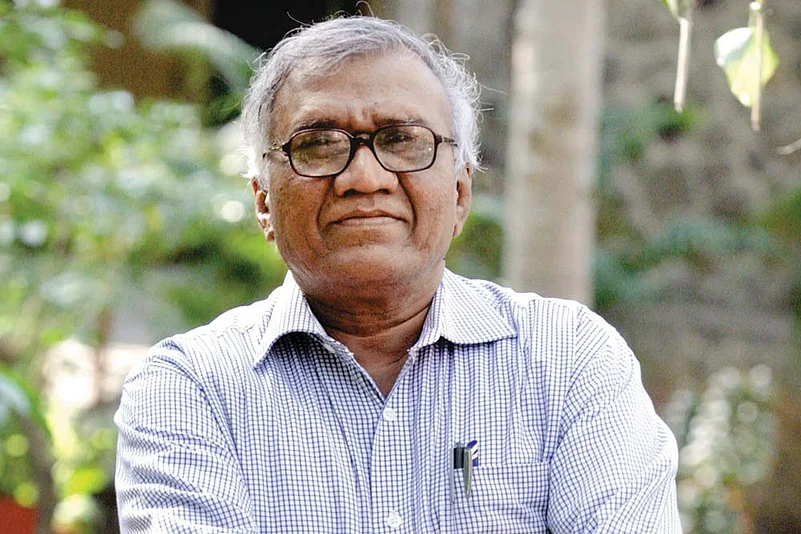
Gopal Guru Academic
Gopal Guru, professor of political science, was always revered and loved at his work place, JNU. But he came to national prominence after being appointed editor of India’s most famous peer-reviewed social science journal, Economic and Political Weekly (EPW), after the controversial exit of his predecessor, journalist Paranjoy Guha Thakurta. His research on the psychological impact of humiliation remains a pathbreaking insight into how Dalits and other underprivileged communities are oppressed socially, culturally and politically. His later work—critiques of earlier Dalit rights movements—lays the foundation for much of today’s activism.

Naomi Janumala Model
Hers is a vision of lean sinuosity, heavy-lidded looks straight from an international catwalk (that resonant name should draw comparisons in due course) and feline grace. The 21-year-old niece of Johnny Lever is creating ripples in Paris, NY and Milan, and impressing hard-edged appraisers of fashion models with her unmistakable impact. In India, for long the valoriser of light-skinned women and certain fetishised features, Naomi is much sought after. Now, Rihanna has chosen Naomi as a face for her fashion line Fenty Beauty. And Vogue humbly begged her for an interview.

Ved Prakash Journalist, Activist
In December 2017, a Hindi journalism alumnus of the Indian Institute of Mass Communication (IIMC), Delhi, launched ActivistVed, a YouTube channel. It became the medium for what Ved Prakash, now 32, had earlier sought to do during his stints at several mainstream newspapers and was left disappointed. In fact, he had started out as a teacher and his aspiration to tell stories in which Dalit lives matter had motivated him to become a journalist. Shocked to find that the newspapers employing him did not carry most of his stories, he quit mainstream journalism in 2016 and moved on to ActivistVed, which now has over 6 lakh followers.

Dr Mudnakudu Chinnaswamy Kannada Author
As a Dalit child in an overlooked village in Karnataka, he was reminded time and again of the outlier, social pariah life of an untouchable—like an “upper caste” woman grudgingly pouring water from above to his cupped palms so that he could quench his thirst on his way home from school, a five-mile walk on a hot day. The pathos of Dalit life occupies the work of Dr Mudnakudu Chinnaswamy, 66, Kannada poet-playwright-essayist and the first graduate in his family. “When I go to the temple / I don’t leave my sandals outside. / I stay outside myself.” His poems are a sad commentary on Hindu society’s discrimination against Dalits and the community’s suffering.

Devanuru Mahadeva Writer
Being fully aware that the everyday script of humiliation was not something you could change easily, Babasaheb Ambedkar left us a critical idiom to handle it with: “The notion of unjust unconscionable suffering” came to be the watchwords when the Constitution was drafted. Devanuru Mahadeva, the Dalit writer in Kannada, offers us a creative idiom that puts aside the preoccupation with victimhood. In the manner in which he uses language as the frontier in the fight against inequality, Mahadeva is his own crusader. The Nanjangud dialect (spoken by the Dalits of Nanjangud) shapes narration and content in his novels and short stories. Mahadeva’s poetic prose, drawing on folk tale and legend—as in the singing minstrels—allows emotions to be reconciled, while the grit of the everyday restores community and instils hope. If everyday speech shapes the contours of Mahadeva’s writing, it equally outlines the ethics of self-preservation and self-presentation. We are made to reorient our listening, and we feel the injustice in the stories he tells us and suffer. This is freedom in its fullness. In recent times, the digital medium has shrunk this space for self-actualisation, leaving us with a bipolar vision that seeks to pitch one identity against another. A focus on the cognitive, best established through our languages, could be the way out of it.
Devanuru Mahadeva’s profile by Sahitya Akademi winner Susan Daniel, who translated his novel Kusumabale. Rest of the text by Bodhisattwa Maity, Prachi Pinglay-Plumber, Giridhar Jha, Puneet Nicholas Yadav, G.C. Shekhar, Ajay Sukumaran and Outlook copydesk.















